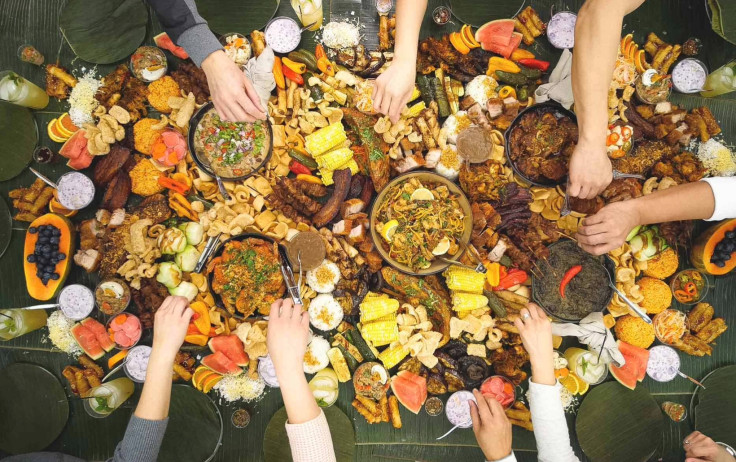Are Filipino Flavours the Next Big Food Trend in the UK?
From TikTok fame to fine dining plates, Filipino cuisine is winning British hearts with bold flavours, cultural roots, and viral appeal

Filipino cuisine is rapidly becoming one of the UK's most cherished food trends. Known for its rich cultural history, vibrant colours and bold yet comforting flavours, the dishes are captivating food lovers across the country.
What Makes Filipino Food So Special?
Filipino cooking is a fascinating fusion of influences. Centuries of Spanish, Chinese, American, and indigenous culinary traditions combine to create dishes that are comforting, complex and balanced.
Popular dishes include:
- Adobo: tender meat stewed in vinegar, soy sauce, garlic and bay leaves, delivering a tangy, savoury hit.
- Kare-kare: a rich peanut-based oxtail stew served with vegetables and fermented shrimp paste.
- Lumpia: crisp spring rolls filled with pork, vegetables or both.
- Ube desserts: eye-catching purple treats made from the native yam, often found in cakes, ice creams and pastries.
Rising Popularity Confirmed by Data
Filipino cuisine is not just a social media sensation, but statistics back its growing prominence too. According to Audley Travel, it is the fourth fastest-growing international cuisine in the UK.
Additional data highlights include:
- A 23% increase in Filipino food-related businesses in the UK between 2022 and 2024.
- Over 70,000 attendees participated in Filipino Food Month events in major cities like London and Manchester in 2025.
- Filipino food content has amassed nearly 1 billion views on TikTok, according to the Vogue Business TikTok trend tracker.
This growth is propelled by a blend of cultural pride within the Filipino community and growing mainstream curiosity.
Social Media's Role in Filipino Food's UK Success
TikTok, Instagram and other platforms have been crucial in popularising Filipino cuisine. Short, visually striking videos showcasing dishes like ube cheesecake, halo-halo and sizzling sisig have gone viral, drawing millions of views.
'I first discovered ube through TikTok,' shared Londoner Hannah Malik. 'It looked so vibrant and delicious, I just had to try it, and now I make it regularly.'
These viral recipe videos make unfamiliar flavours feel accessible and encourage food exploration, helping to build a broader audience.
From Street Food to Upscale Dining
A new generation of Filipino chefs in the UK is elevating traditional dishes into fine dining experiences. This trend, known as Street Food Couture, is blending street-style flavours with sophisticated presentation.
Some standout examples include:
- Lechon kawali sliders served on artisan brioche buns.
- Wagyu sinigang, a luxurious take on the classic sour broth.
- Ube brûlée tarts, combining Filipino ingredients with French pastry techniques.
According to Unilever Food Solutions, these inventive dishes are increasingly common on premium menus in cities such as London, Birmingham and Manchester.
Community and Cultural Authenticity Drive Growth
There are over 160,000 Filipinos living in the UK, many of whom maintain strong culinary traditions and have introduced authentic dishes to British audiences.
'Cooking these dishes is a way to keep my culture alive and share it with others,' explained Maricel Santos, who operates a popular Filipino supper club in Birmingham. This deep connection to heritage helps Filipino cuisine maintain authenticity and ensures it resonates beyond mere trendiness.
Is Filipino Food a Passing Fad?
Given the growing number of UK restaurants, social media buzz, and strong community support, Filipino food looks set to become a permanent fixture in Britain's diverse food landscape. The reason for its sustained popularity include a unique balance of comfort and novelty in flavours, increasingly visible presence in high-end dining and casual eateries alike, social media-driven engagement introducing the cuisine to new audiences and strong cultural foundations that foster authenticity.
© Copyright IBTimes 2025. All rights reserved.




















